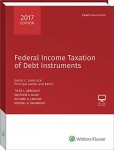[2017] Videos
This TDM Special Issue aims at analysing the current scenario that mediation faces in the context of insolvency matters, as well as new trends, developments, and challenges.
Guest Editors: Prof. Laura Carballo Piñeiro and Prof. Katia Fach Gómez
Table of Contents and Free Excerpt available at:
https://www.transnational-dispute-management.com/journal-browse-issues-toc.asp?key=74
The Mediation of Bankruptcy Disputes in the United States
by A.L. Gropper
The Role of Mediation in the New EU Approach to Insolvency
by L. Galanti
Mediation in the Context of (Approaching) Insolvency: A Review on the Global Upswing
by N. Pavlova Mocheva, World Bank Group
A.R. Shah
Mediation in Formal and Informal Insolvency: A Greek Perspective
by E.S. Papadimitriou
The Role of Mediation in Japanese Insolvency Practice
by S.I. Abe
The Three Targets of Insolvency Mediation: Dispute Resolution, Agreement Facilitation, Corporate Distress Management
by P. Lucarelli, I. Forestieri
Mediation as A Path to Business Restructuring – Contributions to the Portuguese Insolvency Framework
by A.F. Ferreira Colaço da Conceição, C.F. Marques Cebola
The Role of Mediation in Refinancing Groups of Companies: The Case of Spain
by M. Flores
The Insolvency Mediation in the Spanish Law
by C. Senés Motilla
Out of Court Payment Agreement. A Sui Generis Mediation in Insolvency Matters in Spain
by G. García-Rostán Calvín, S. Tomás Tomás
A Deliberation on Adapting Aspects of Singapore’s Mediation Initiatives Within the Australian Federal Court’s Practice to Further Improve the Liquidators’ Recovery of Assets
by C.F. Symes, J.F. Fitzpatrick
Determinants of Failure … and Success in Personal Debt Mediation
by J.J. Kilborn
Non-Performing Loans Prevention in Italy: Early Warning Indicator and Negotiation – Mediation in Bankruptcy
by G. Matteucci
The Effect of Insolvency on International Mediation – The European and Spanish Perspectives
by M. Penadés Fons
Choice of Law aspects of Mediation in Cross-Border Insolvencies within the European Legal Framework
by M. Asgharian
Federal Income Taxation of Debt Instruments is the definitive reference for the many complicated issues involved with debt instruments. This comprehensive treatise contains clear interpretations of the basic rules governing original issue discount and imputed interest and detailed coverage of many specialized topics. In addition to complete coverage of the final OID regulations, the book covers virtually every aspect of the taxation of debt instruments and many related areas. CONTENTS: – Basic Concepts – Determining Total Original Issue Discount – Imputed Interest on Debt Issued for Property – Below-Market and Intercompany Loans – Current Inclusion and Deduction of OID – Accounting for Interest – Short-term Obligations – Variable Rate Debt Instruments – Contingent Debt Instruments and Integration – OID: Additional Special Topics – Market Discount – Bond Premium – Sales, Exchanges, Recapitalizations and Redemptions – Debt Modifications – Cancellation of Debt – Coupon Stripping – Information Reporting and Withholding – International Issues
We have all read the headlines featuring a fortunate college-bound student who received $100,000 or more in scholarship awards. Assuming that the scholarships were renewable annually, this amount could easily pay for four years of college at any American college or university. However, these success stories are the exception, not the rule. They are aberrations among the pool of millions of aspiring college students who submit scholarship applications to the hundreds of companies, foundations and non-profit groups that offer them. The reality is a much different, and sobering, picture. According to federal government estimates, the average undergraduate who borrows money to pay for college graduates with about $37,000 in student loan debt. 101 Scholarship Applications: What It Takes to Obtain a Debt-Free College Education was written specifically to address the issue of college loan debt, and help students and their parents identify scholarship opportunities, as well as develop strategies for submitting applications and winning awards. This book’s author, Gwen Richardson, is a parent who has spent five years carefully researching scholarship sources for her daughter, who will enter her senior year in college in 2017 and is completely debt-free. The highlight of this book is a comprehensive listing of more than 200 scholarship sources, including award amounts, eligibility requirements and direct web site links. All sources have been vetted and researched for accuracy.



